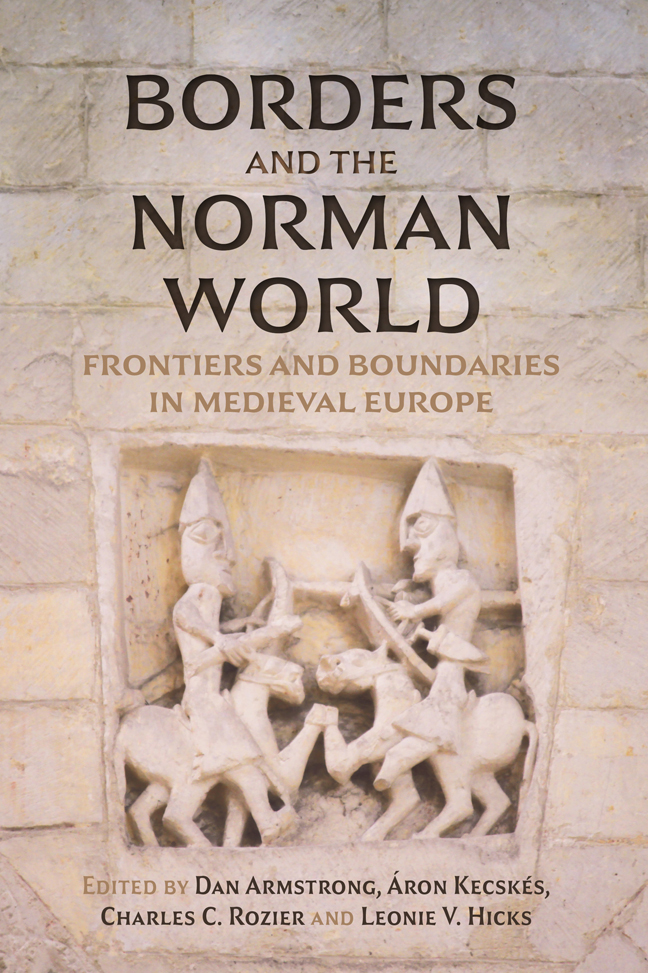Book contents
- Frontmatter
- Contents
- List of Illustrations
- List of Contributors
- Acknowledgements
- List of Abbreviations
- Naming Conventions
- Maps
- Introduction: Writing the Borders of the Norman World
- Part I Borders in and Around the Norman World
- Part II Ecclesiastical Borders
- Part III Conceptual Boundaries
- Afterword: Borders, Landscapes, and Seascapes
- Select Bibliography
- Index
9 - The Crossing of Borders: The Legations of John of Crema, 1124–1125
Published online by Cambridge University Press: 22 February 2024
- Frontmatter
- Contents
- List of Illustrations
- List of Contributors
- Acknowledgements
- List of Abbreviations
- Naming Conventions
- Maps
- Introduction: Writing the Borders of the Norman World
- Part I Borders in and Around the Norman World
- Part II Ecclesiastical Borders
- Part III Conceptual Boundaries
- Afterword: Borders, Landscapes, and Seascapes
- Select Bibliography
- Index
Summary
The legations of John of Crema, cardinal-priest of S. Crisogono, to England and Scotland in 1124–25 are a clear example of a papal legate crossing established episcopal and political borders within the Norman World. Contemporaries and modern historians recognise John's legations as momentous. They broke new ground in terms of legatine jurisdiction in the British-Irish Isles. He was the first legate a latere, a legate dispatched from the papal curia or literally ‘from the pope's side’, since 1070 to be granted the freedom of travel and permission to fully perform his commission. John was also the first non-native papal legate since 1070 to hold a reforming council. In this respect, John succeeded where other papal legates sent by the pope during the reign of Henry I (1100–35) failed. Further, John of Crema's legation was significant in terms of geographical scope. He was able to move freely across England and Wales. Moreover, he held a separate legation for Scotland, and was the first identifiable legate a latere to act there. The distinct legatine missions held by John of Crema indicate how the papacy perceived the borders of the realms of the British-Irish Isles. They suggest that the papacy could recognise political entities independently of ecclesiastical borders, despite its support for York's claims of metropolitan authority over the Scottish Church. This chapter will consider two matters: first, the reasons why John of Crema was able to cross into an ecclesiastical jurisdiction previously closed to legates a latere; second, what the separate legatine mission to Scotland represented for the perceptions of political and episcopal borders of the British-Irish Isles.
Ecclesiastical jurisdiction is a major theme of this chapter. Boundaries of ecclesiastical jurisdiction were often in flux. Physically, ecclesiastical jurisdiction was delineated by the borders of dioceses and metropolitan provinces. They could be coterminous with shire borders and the boundaries of the realm, though, like the secular borders, they were often debated and contested in Britain. Beyond physical borders, the boundaries between ecclesiastical and royal jurisdiction in early twelfth-century England were often blurred. Martin Brett highlighted specifically that lay courts continued to ‘hear cases which would subsequently be regarded as the prerogative of the church’, despite William the Conqueror's writ, issued in c. 1080, separating lay and ecclesiastical courts. He further noted that bishops ‘might preside over a bewildering variety of assemblies’, of which some may be considered entirely ecclesiastical.
- Type
- Chapter
- Information
- Borders and the Norman WorldFrontiers and Boundaries in Medieval Europe, pp. 215 - 240Publisher: Boydell & BrewerPrint publication year: 2023

